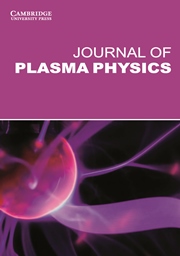No CrossRef data available.
Article contents
The Infinity Two Fusion Pilot Plant baseline plasma physics design
Published online by Cambridge University Press: 26 March 2025
Abstract
We provide an assessment of the Infinity Two Fusion Pilot Plant (FPP) baseline plasma physics design. Infinity Two is a four-field period, aspect ratio A = 10, quasi-isodynamic stellarator with improved confinement appealing to a max-J approach, elevated plasma density and high magnetic fields (⟨B⟩ = 9 T). At the envisioned operating point [800 MW deuterium-tritium (DT) fusion], the configuration has robust magnetic surfaces based on magnetohydrodynamic (MHD) equilibrium calculations and is stable to both local and global MHD instabilities. The configuration has excellent confinement properties with small neoclassical transport and low bootstrap current (|Ibootstrap| ∼ 2 kA). Calculations of collisional alpha particle confinement in a DT FPP scenario show small energy losses to the first wall (< 1.5%) and stable energetic particle/Alfvén eigenmodes at high ion density. Low turbulent transport is produced using a combination of density profile control consistent with pellet fueling and reduced stiffness to turbulent transport via three-dimensional shaping. Transport simulations with the T3D-GX-SFINCS code suite with self-consistent turbulent and neoclassical transport predict that the Pfus = 800 MW operating point is attainable with high fusion gain (Q = 40) at volume-averaged electron densities ne ≈ 2×1020 m−3, below the Sudo density limit. Additional transport calculations show that an ignited (Q = ∞) solution is available at slightly higher density (2.2×1020 m−3) with Pfus = 1.5 GW. The magnetic configuration is defined by a magnetic coil set with sufficient room for an island divertor, shielding and blanket solutions with tritium breeding ratios (TBR) above unity. An optimistic estimate for the gas-cooled solid breeder designed Helium Cooled Pebble Bed is TBR ∼ 1.3. Infinity Two satisfies the physics requirements of a stellarator fusion pilot plant.
- Type
- Research Article
- Information
- Creative Commons
- This is an Open Access article, distributed under the terms of the Creative Commons Attribution licence (http://creativecommons.org/licenses/by/4.0/), which permits unrestricted re-use, distribution and reproduction, provided the original article is properly cited.
- Copyright
- © The Author(s), 2025. Published by Cambridge University Press


